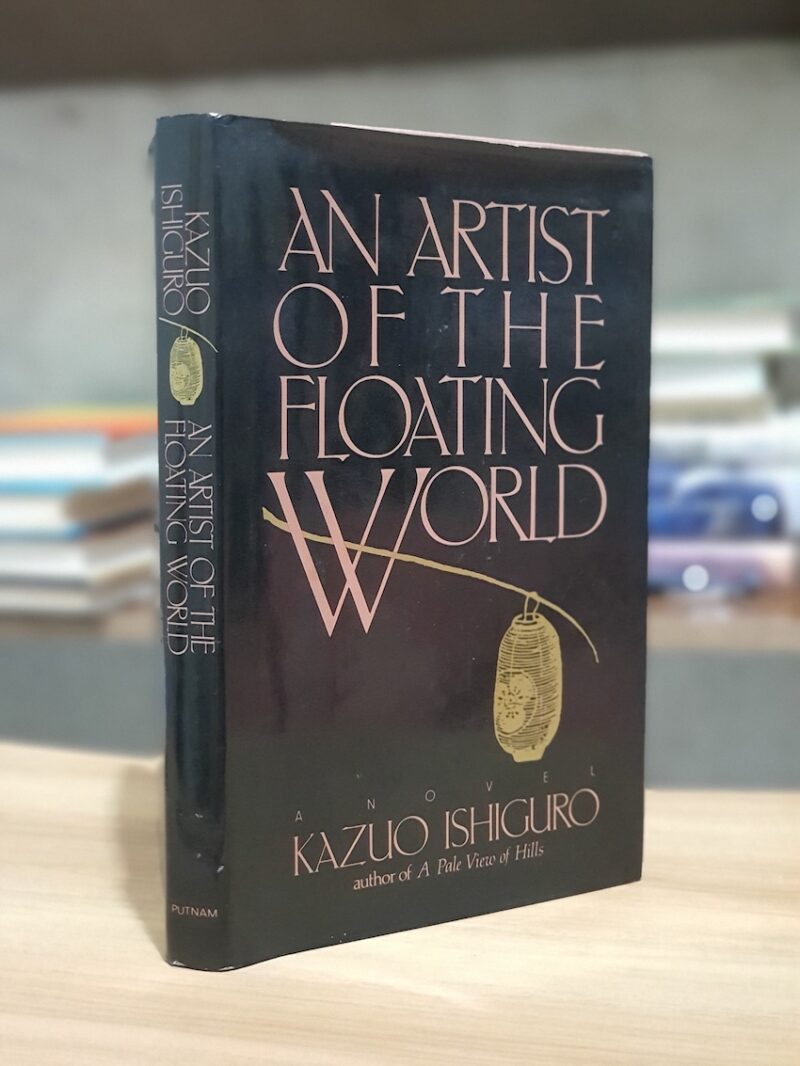Rumaan Alam’s Leave the World Behind (2020) is a thought-provoking book that explores the fragility of human relationships and the collapse of social structures under pressure. Through a gripping narrative, it examines the tenuous threads that bind society, delving into issues of race, class, and family dynamics. Far more than a conventional disaster story, it offers a profound examination of human behavior when subjected to extraordinary situations.
The story unfolds as Amanda and Clay, along with their teenage children Archie and Rose, embark on a supposedly idyllic week-long vacation in a remote Long Island home. Their retreat takes an unexpected turn with the late-night arrival of the homeowners, G. H. and Ruth Washington, an older black couple. They report a mysterious blackout that has disconnected the city.

This sudden convergence of two families who are strangers to each other into one space under strange and stressful conditions forms the heart of the narrative. As bizarre and unexplained events escalate—power outages, disturbing animal behaviors, and cryptic broadcasts—the families’ vacation morphs into a tension-filled examination of their vulnerabilities and an impending sense of doom.
This gripping narrative interweaves suspense with social commentary, delving into the complexities of trust, privacy, and the unexpected intersections of personal and global crises. The book examines the interplay of enforced coexistence that challenges each character’s understanding of the world and themselves, making it an essential read for those drawn to fiction that combines emotional intensity with intellectual depth.
Themes and Narrative Techniques
Key Themes and Motifs
This book transcends the typical disaster story by using societal collapse as a backdrop to explore the breakdown of human relationships and anxieties surrounding class and privilege. Alam forces his characters—and by extension, the reader—to confront uncomfortable truths about these biases and how they manifest in a crisis. This confrontation is amplified by the characters’ isolation, stripping away veneers to reveal the primal fear of the unknown and the desperate need for social connection and security.

The undefined global disaster serves as a turning point, revealing the cracks in the systems and relationships the characters rely on. It compels them to confront their vulnerabilities and reassess their roles, particularly as parents navigating the weight of responsibility amid mounting chaos. Alam skillfully blends these themes with elements of suspense, crafting a narrative that challenges its characters’ assumptions and leaves readers with much to reflect on.
Narrative Structure and Style
Alam masterfully crafts Leave the World Behind with a deceptively simple narrative structure that belies the book’s depth and nuance. The sense of unease is palpable, as the isolated setting becomes a microcosm for examining strained dynamics and the human response to the unknown. By interleaving moments of action with introspection, Alam’s narrative style creates an atmospheric tension while ensuring that every detail contributes to the story’s impact and narrative arc.
The structure of the book is meticulously crafted to enhance its suspense by employing a close third-person point of view that shifts among characters, offering glimpses into their fears and motivations. Alternating perspectives between Amanda and G. H., among others, provide contrasting viewpoints about the unknown crisis, highlighting the disparity in their perceptions and anxieties. This shifting perspective creates a layered narrative, revealing the characters’ internal struggles while heightening the tension between them.
The book’s deliberate pacing mirrors the gradual escalation of the crisis, drawing the reader into the claustrophobic atmosphere of the isolated vacation home. The slow buildup of suspense keeps readers on edge, mirroring the uncertainty that envelops the characters. The prose itself is taut and evocative, blending fragmented sentences and sharp observations that capture the immediacy of the unfolding events.
Literary Craft and Influences

Writing Style and Techniques
Alam’s writing is distinguished by its precision and psychological insight. His use of a “dueling” third-person limited perspective creates a unique dynamic, allowing for both intimacy and a broader view of the characters’ inner workings. His ability to distill complex thoughts and emotions into succinct yet impactful sentences showcases a mastery of language, creating characters whose vulnerabilities and delusions feel authentic.
The book’s prose is marked by its sharp observational quality and sensory richness. Its use of repetition, echoing key phrases and images, reinforces the escalating tension and cyclical nature of the characters’ fears. Through a minimalist yet evocative style, Alam builds a world where every detail serves to heighten the unease of the surrounding events. By combining psychological acuity with narrative immediacy, he constructs a story that not only examines personal interactions but also reflects broader external conflicts.
Influences on the Author’s Work
Though Alam’s writing style is distinctly his own, the influences of authors such as Agatha Christie, Robert Ludlum, and Tom Clancy are evident in his meticulous plotting, well-paced narratives, and ability to create suspense. These influences inform his approach to narrative progression, ensuring each element of the story contributes meaningfully to its momentum and thematic richness.
Furthermore, Alam’s thematic choices also reflect the imprint of literary figures such as Paul Auster, Shirley Jackson, and Don DeLillo. Jackson’s influence is apparent in the novel’s exploration of paranoia and the disintegration of social order, while DeLillo’s impact can be seen in Alam’s examination of contemporary anxieties and the influence of media and technology. In addition, Auster’s existential undertones inspire subtle meditations on human agency amid uncertainty.
Literary Elements and Devices
Alam skillfully employs a variety of literary elements and devices to delve profoundly into the human psyche. The book’s gradual pacing mirrors the escalating tension in the story, allowing the characters’ internal struggles to simmer. Amanda’s latent racism becomes a pivotal plot element, woven seamlessly into her narrative toward self-awareness, which unfolds with honesty and relatability.
Foreshadowing builds a sense of unease, while the isolated vacation home symbolizes both physical and emotional disconnection. The book’s prose, stripped of unnecessary ornamentation, enhances the immediacy of the crisis, keeping the focus squarely on the humanity of the characters as they try to navigate a forthcoming disaster. Alam’s prose, rich in detail yet restrained, effectively emphasizes the characters’ humanity amidst an imminent danger, keeping the reader engaged in the developing drama.
Symbolism and Metaphors
Symbolism and metaphors are integral to Leave the World Behind. The title itself is a metaphor encompassing the act of leaving behind familiarity for uncertainty. Alam uses the interactions between the white family and the black couple as a lens to explore racial tension and the obliviousness that often accompanies privilege. This dynamic becomes a poignant metaphor for social detachment, exposing the silent divisions that persist even in moments of shared crisis.
The widespread blackout represents both the global crisis and the characters’ detachment from larger realities, while the ominous natural disturbances mirror their internal chaos. The vacation house itself is a dual symbol of refuge and confinement, embodying the characters’ conflicting desires for security and freedom. These layers of symbolism and metaphor provide a vivid framework for Alam’s commentary on the fragility of human connections and the illusory nature of control.
Reasons to Read the Book
The book transcends the typical disaster narrative by delving into the psychological dynamics of crisis and the fragility of social structures we take for granted. Alam’s ability to dissect the mindset of contemporary liberal America forces readers to confront their assumptions about safety and control in times of crisis. The exploration of race, class, and privilege compels us to confront uncomfortable truths about ourselves and the world around us.
The novel’s strength lies in its ability to provoke introspection and dialogue. By forcing readers to reconsider their assumptions about security and control, Leave the World Behind compels readers to reevaluate their deeply held beliefs. It examines how loneliness, moral choices, and anxieties shape individuals in moments of crisis, serving as a mirror that reflects the impermanence of what we assume to be stable and the fragility of human connections.
Selected Passage with Analysis
She wanted to say “A deer,” but there was no one there to hear her. She looked over her shoulder into the house and saw her parents talking. She wasn’t supposed to go in the pool, but she wasn’t going to go in the pool. She walked down the steps onto the damp grass and the deer just watched her, barely curious. She hadn’t even seen that there was another beside it—no more. There were five deer, there were seven; every time Rose adjusted her eyes to try to understand what she was seeing, she was seeing something new. There were dozens of deer. Had she been up higher, she’d have understood that there were hundreds, even more than a thousand, more than that, even. She wanted to run inside and tell her parents, but she also wanted to just stand there and see it.
Pages 76-77, Leave the World Behind by Rumaan Alam
In this passage, Rumaan Alam explores themes of isolation, perception, and nature’s overwhelming presence. While her parents remain absorbed in their conversation inside the house, Rose experiences a solitary and transformative encounter, emphasizing the divide between the safety of domestic spaces and the unknown that lies beyond.
The imagery in this scene enhances its tension and surreal quality. Alam’s use of sensory details, such as the "damp grass" and the still, watchful deer, immerses the reader in Rose’s point of view. The gradual escalation from a single deer to “dozens,” and finally the suggestion of "hundreds, even more than a thousand," reflects the malleability of perception.
Symbolically, the deer embody both beauty and unease, challenging the characters' fragile sense of control. Rose’s hesitant movement from the house to the wild mirrors a boundary crossing — both literal and psychological — amplifying the tension between innocence, curiosity, and fear.
Further Reading
Rumaan Alam | The True Horror in Leave The World Behind by Fane Productions, YouTube
‘Leave the World Behind’ Ending Explained: Author Rumaan Alam on the Significance of ‘Friends’ and the Accuracy of That Final Theory [spoilers] by Caroline Brew, Variety
How Netflix’s Leave The World Behind Adaptation Differs From the Book [spoilers] by Cady Lang, Time




